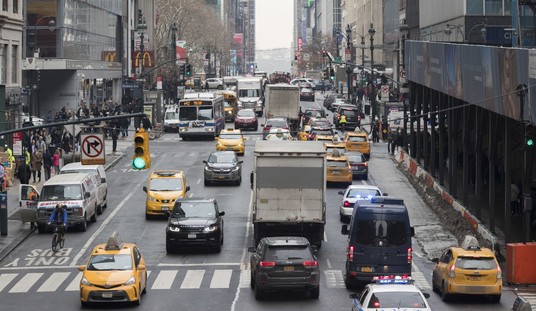Of all the provisions of Dodd-Frank conservatives disliked, the Consumer Financial Protection Board may have been the one least liked of all. Its proponent, Elizabeth Warren, ended up in the US Senate when Republicans refused to support her nomination to run the CFPB, perhaps a bit of karma in the long run. Now the CFPB has released its first set of mortgage rules, ostensibly to protect consumers — and conservatives may like what they see, at least conceptually if not organizationally:
The government is establishing new rules for mortgages that will make it harder for some borrowers to qualify but that are designed to prevent the kind of risky lending that nearly caused the housing market to collapse during the financial crisis.
The Consumer Financial Protection Bureau on Thursday will roll out the first of several far-reaching changes to the nation’s mortgage market, limiting upfront fees and curtailing practices such as interest-only payments that can leave homeowners stuck with unsustainable loans. The agency also will set standards for how much income a consumer must have to obtain a mortgage.
This marks the first time the government has spelled out what constitutes a “qualified mortgage,” an effort to prevent the widespread toxic loans that hurt millions of Americans during the housing crisis.
Banks that offer qualified mortgages will be protected from lawsuits if they adhere to the criteria. The consumer agency hopes that will drive the entire industry to live by the tighter standards that have taken hold since the crisis, ensuring safer loans but potentially limiting the number of people who can qualify to buy a home.
“Credit is going to be restricted, at least a little,” said Cristian deRitis, a senior director at Moody’s Analytics. “The debt-to-income cap, for instance, is going to affect some folks at the lower end of the income scale.”
In other words, the government is going to force lenders to stick to rules they liked before the government forced them to stop using them. After all, it was government intervention that created the housing bubble by pressuring lenders into ignoring these criteria — first by force, with the Community Reinvestment Act in the 1990s. Later, when the CRA didn’t work quickly enough, Congress created incentives for expanding subprime lending by pushing Fannie Mae and Freddie Mac into buying up massive amounts of questionable loans, making lending a risk-free proposition for paper-sellers like Countrywide Mortgage and others, and then securitizing them in the financial markets as low-risk bonds.
More than once, conservatives questioned this strategy. Even George W. Bush, who liked to take credit for expanded home ownership himself, warned Congress about the risks in 2003 to no avail. The bubble continued to expand until suddenly, the economy slowed — and the false equity in the housing market started to disappear.
Now the government is intervening once again, in order to prevent lenders from doing what the government pressured them to do over a ten-year period, in order to avoid another collapse. This isn’t a bad idea, conceptually, but I have a better proposal. Why not just get government out of the lending business and let the people whose capital is at risk decide how to invest it and lend it? Had we done that from the beginning, we never would have have the bubble in the first place.








Join the conversation as a VIP Member